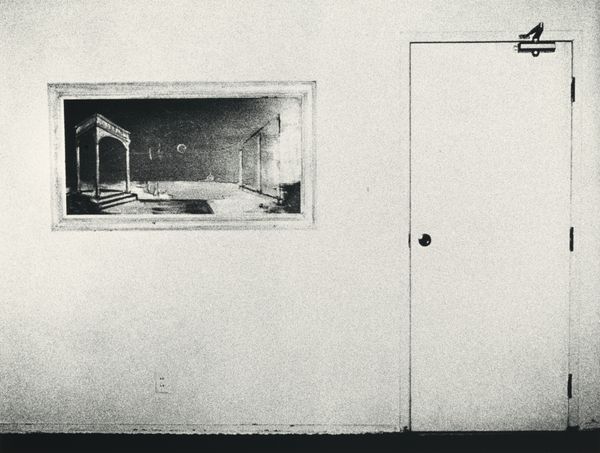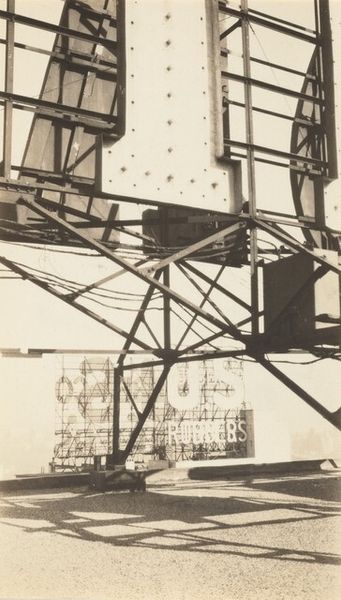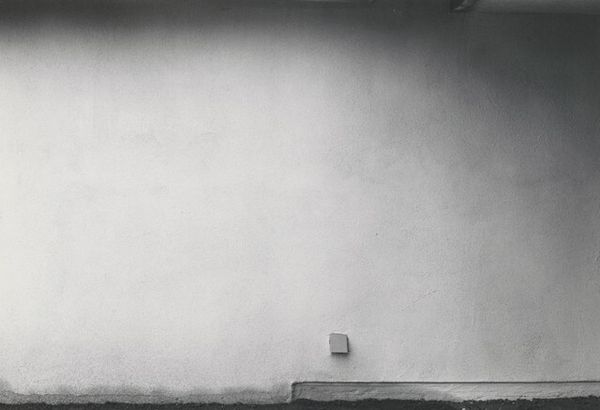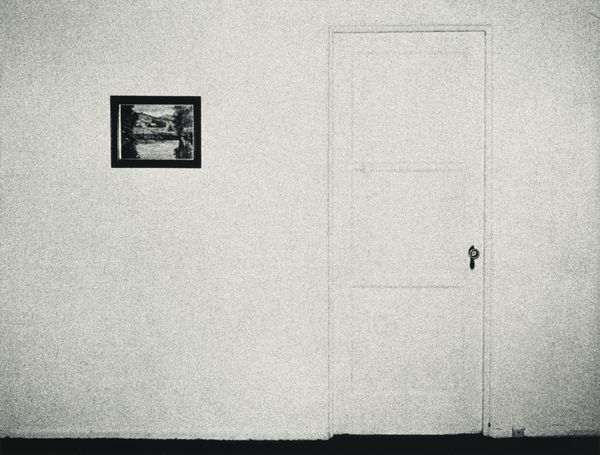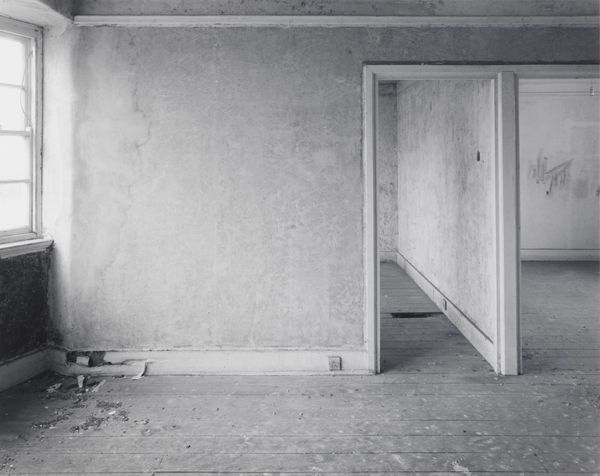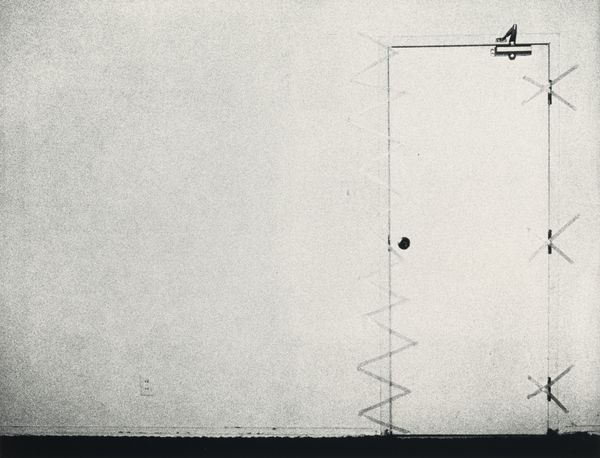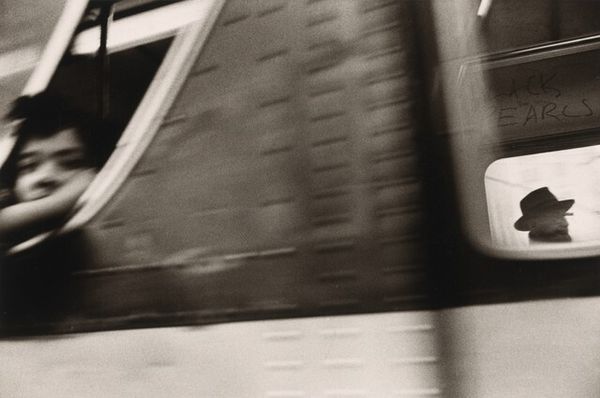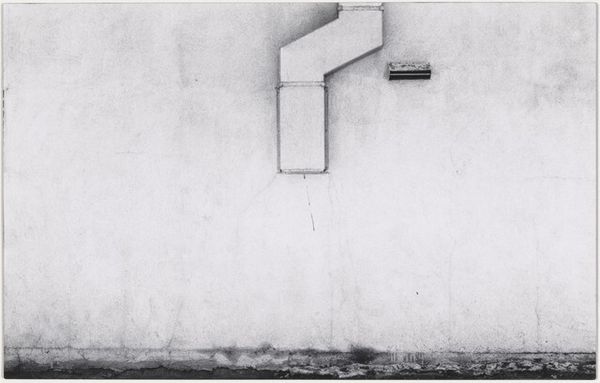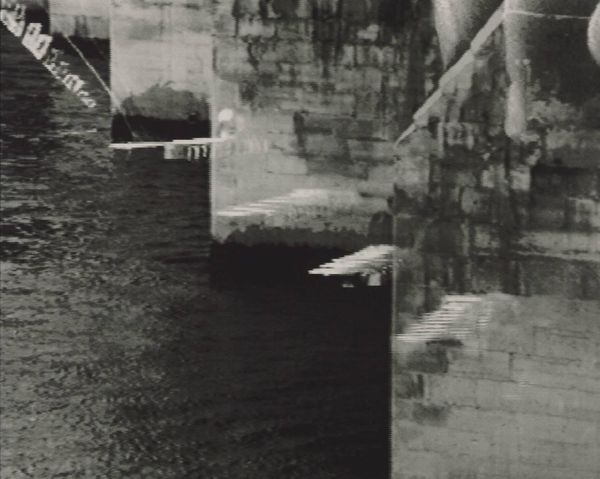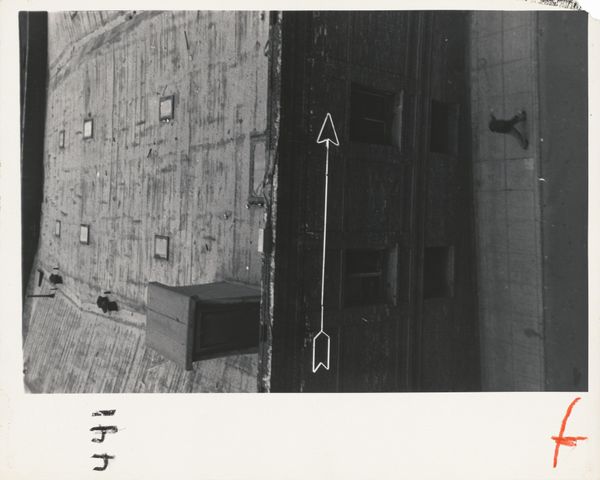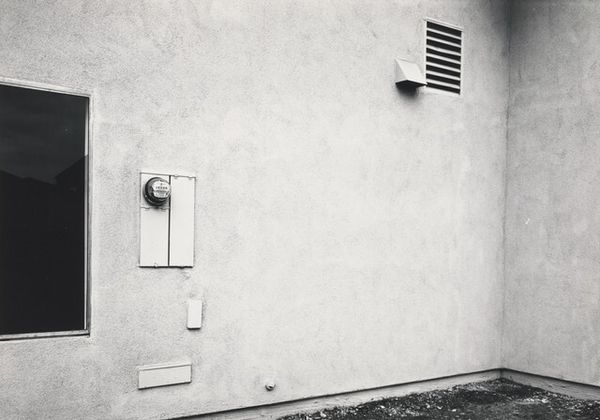
photography
#
abstract-expressionism
#
photography
#
geometric
#
line
#
cityscape
#
modernism
#
realism
Dimensions: sheet (trimmed to image): 15.8 x 23.7 cm (6 1/4 x 9 5/16 in.)
Copyright: National Gallery of Art: CC0 1.0
Curator: It strikes me as almost melancholic, this photograph. Bleak but ordered. Editor: Well, let's orient our listeners. The work before us is a photograph, Untitled, by Ralston Crawford, created around 1942. It typifies Crawford's Precisionist style. I am intrigued by how it showcases the grid created by these dark, barred forms – ladder and vent alike – set against a massive wall. Curator: Exactly! It is interesting because grids appear in dreams when a patient feels confined in a situation that has little chance for growth or advancement. In a cultural context, such harsh geometry reflects the cold, impersonal architecture increasingly dominating urban spaces at that time. The high contrast certainly adds to the sense of severity. Editor: And the wall itself – it is such a textural and imposing material presence! You can almost feel the rough surface of the concrete, notice its imperfections. Crawford used a photographic technique that flattens the depth of field, enhancing the stark geometry but it gives a really palpable sense of the physical density of industrial materials. There is a certain lack of grace in such concrete textures, one is made conscious of the cost of material, production and perhaps construction overall. Curator: True. And those drips beneath the vent suggest age, decay. Maybe those drips, set against the sharp lines, represents a form of symbolic cleansing that the architecture and population might both yearn for. This idea that rigid social and architectural forms demand cleansing or refreshing speaks strongly of Modernism's own troubled psychology. Editor: I think so! The composition also directs our attention to labor, a visual ladder allowing access, creating space in a modern city. Yet, where is that labor going? It hints at something – maintenance? Inspection? Access? - beyond the frame, while foregrounding an object made to enable the exploitation of urban and industrial production. Curator: What remains so potent, for me, is its stillness. It is devoid of human figures, rendering its subject, perhaps unconsciously, in need of healing from industrial alienation. Editor: Indeed, Ralston's lens frames a segment of reality, underscoring the processes and weight of industrial production with sharp, critical realism. Curator: A critical realism indeed, perhaps filtered through Crawford’s desire for beauty in what appears mundane, lending a deeply suggestive atmosphere that carries multiple layers of cultural symbolism.
Comments
No comments
Be the first to comment and join the conversation on the ultimate creative platform.
